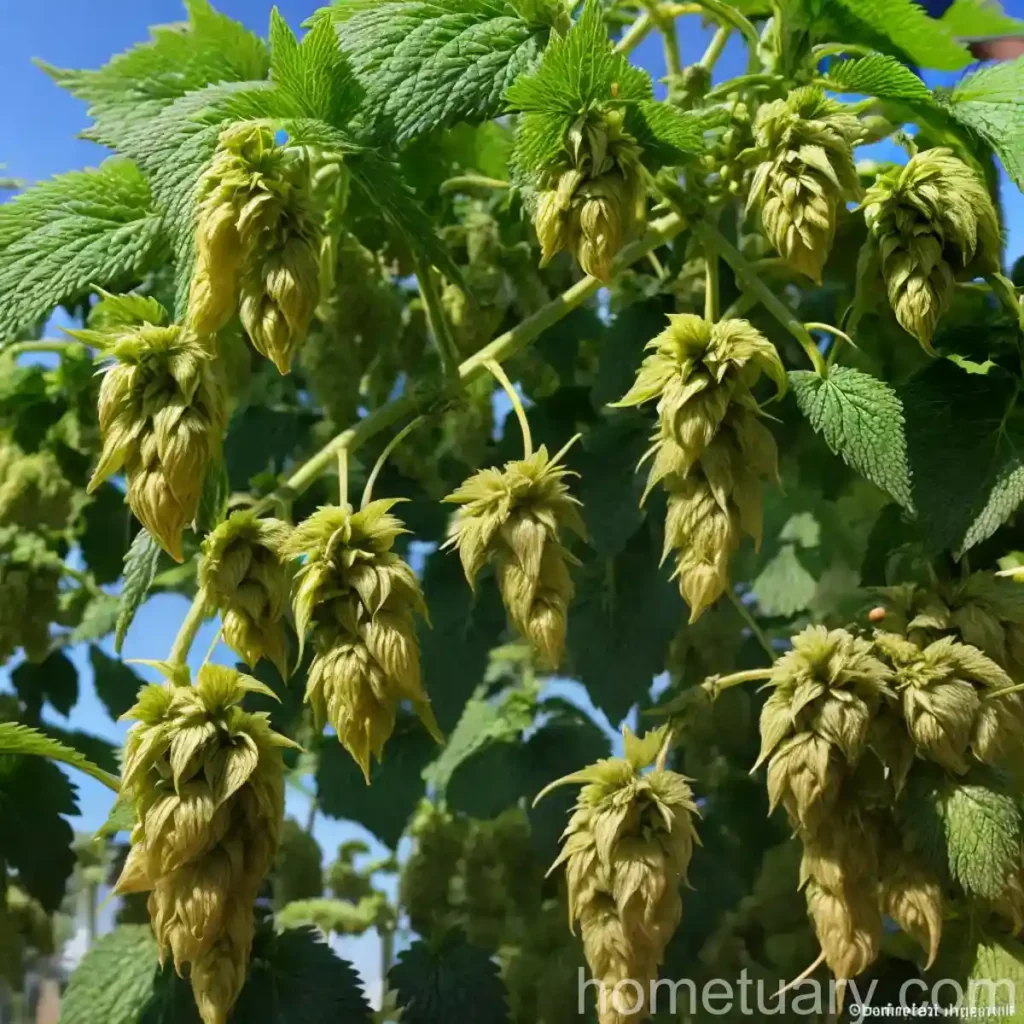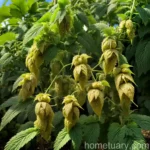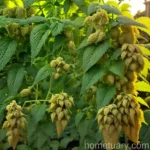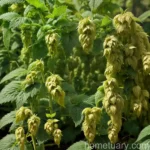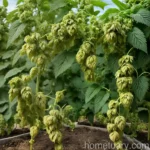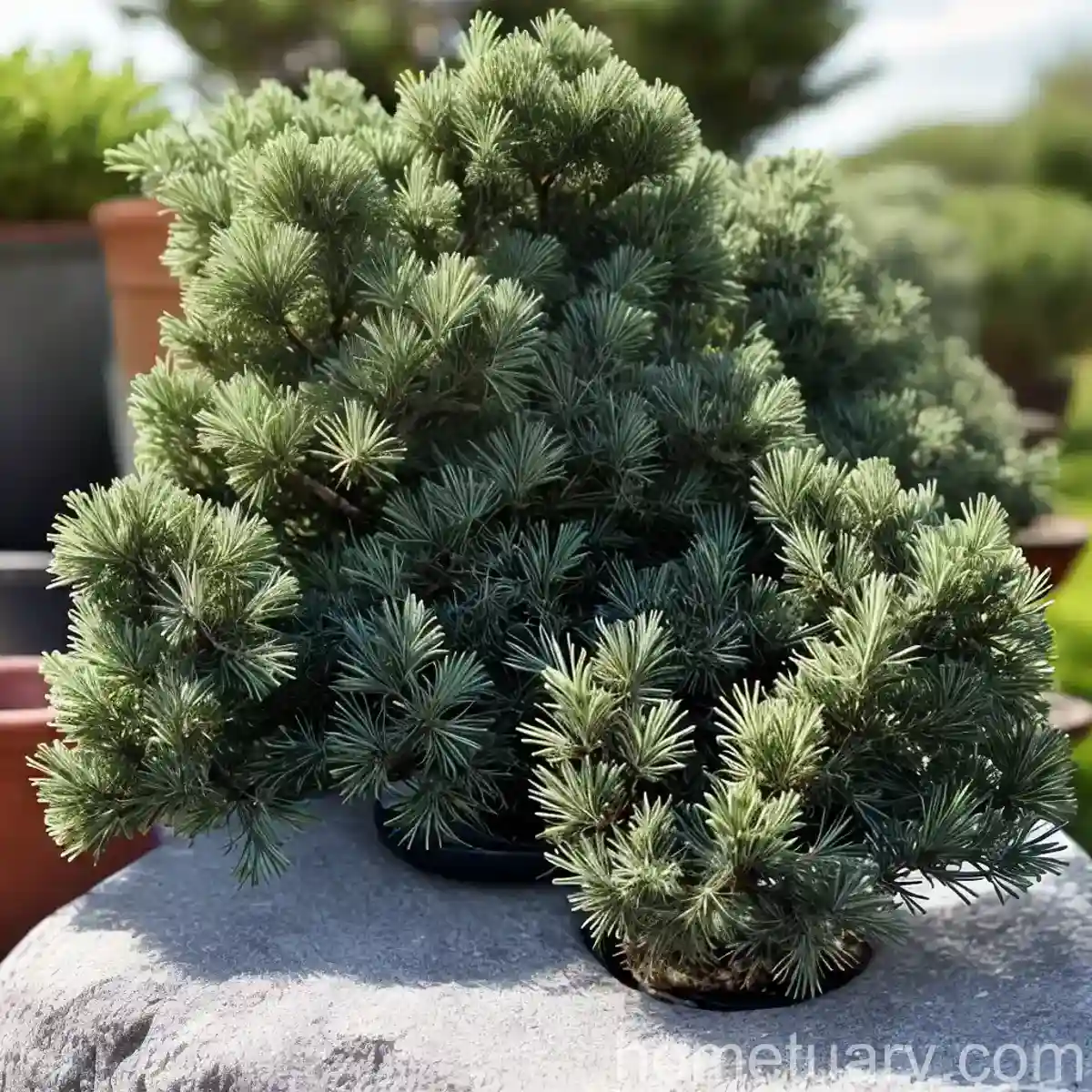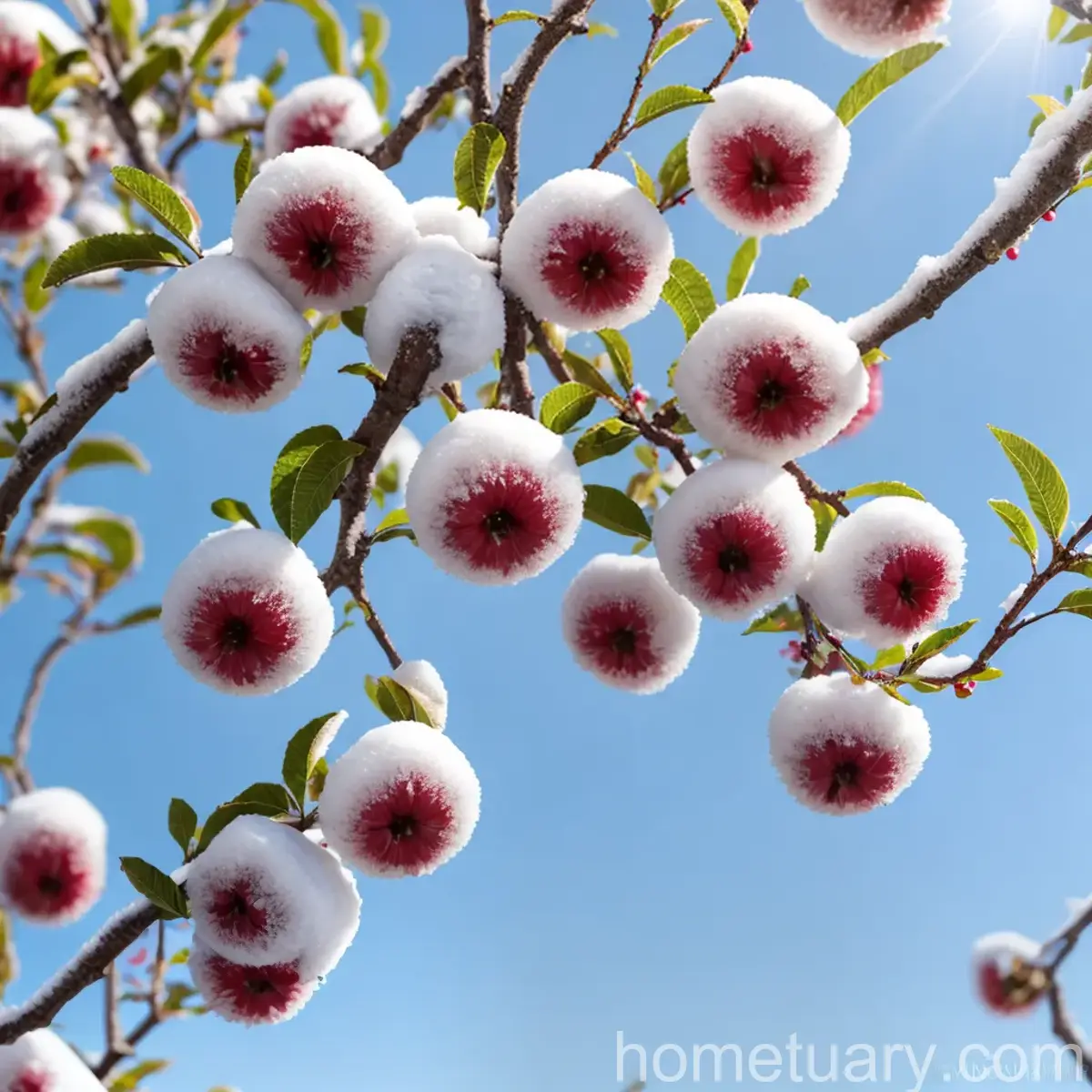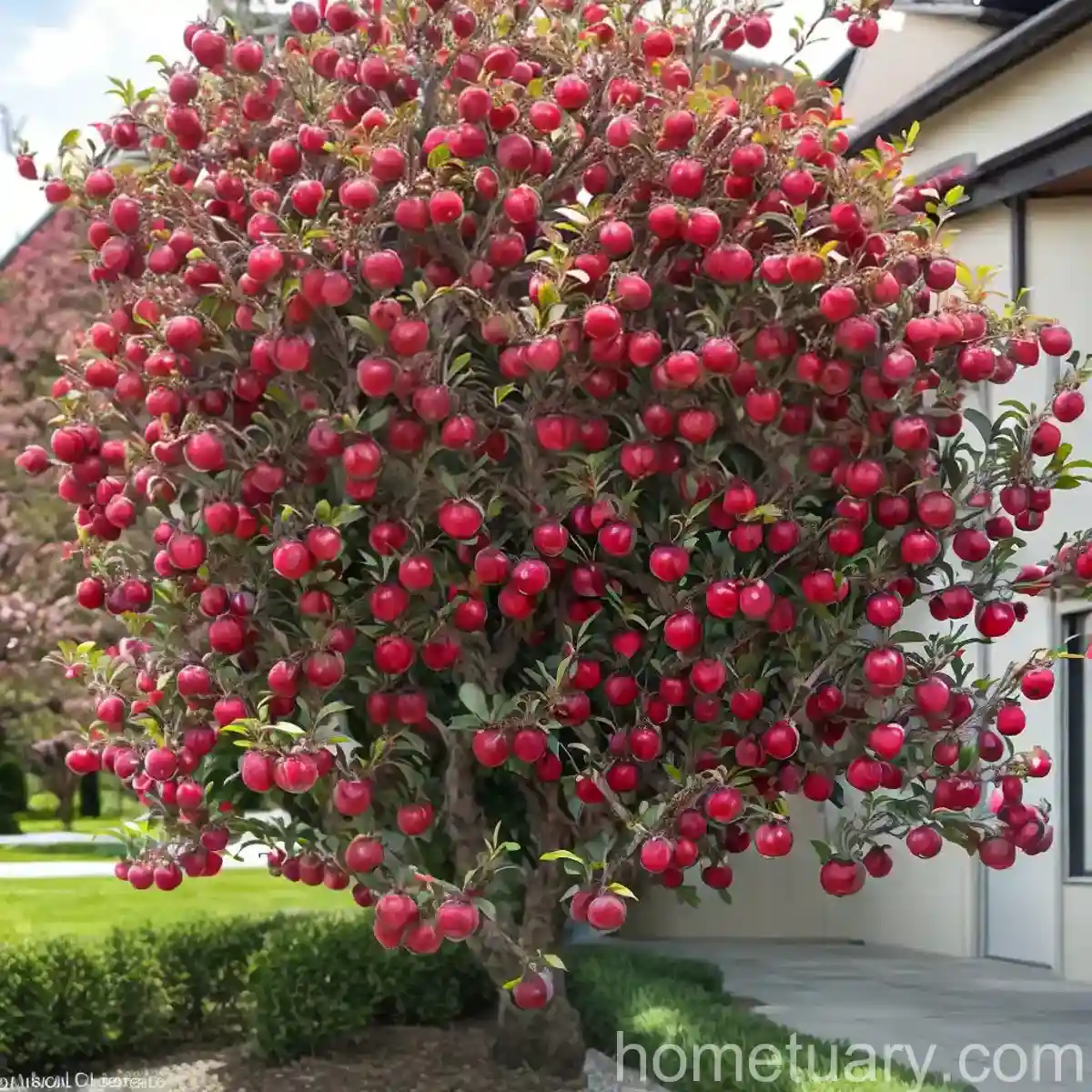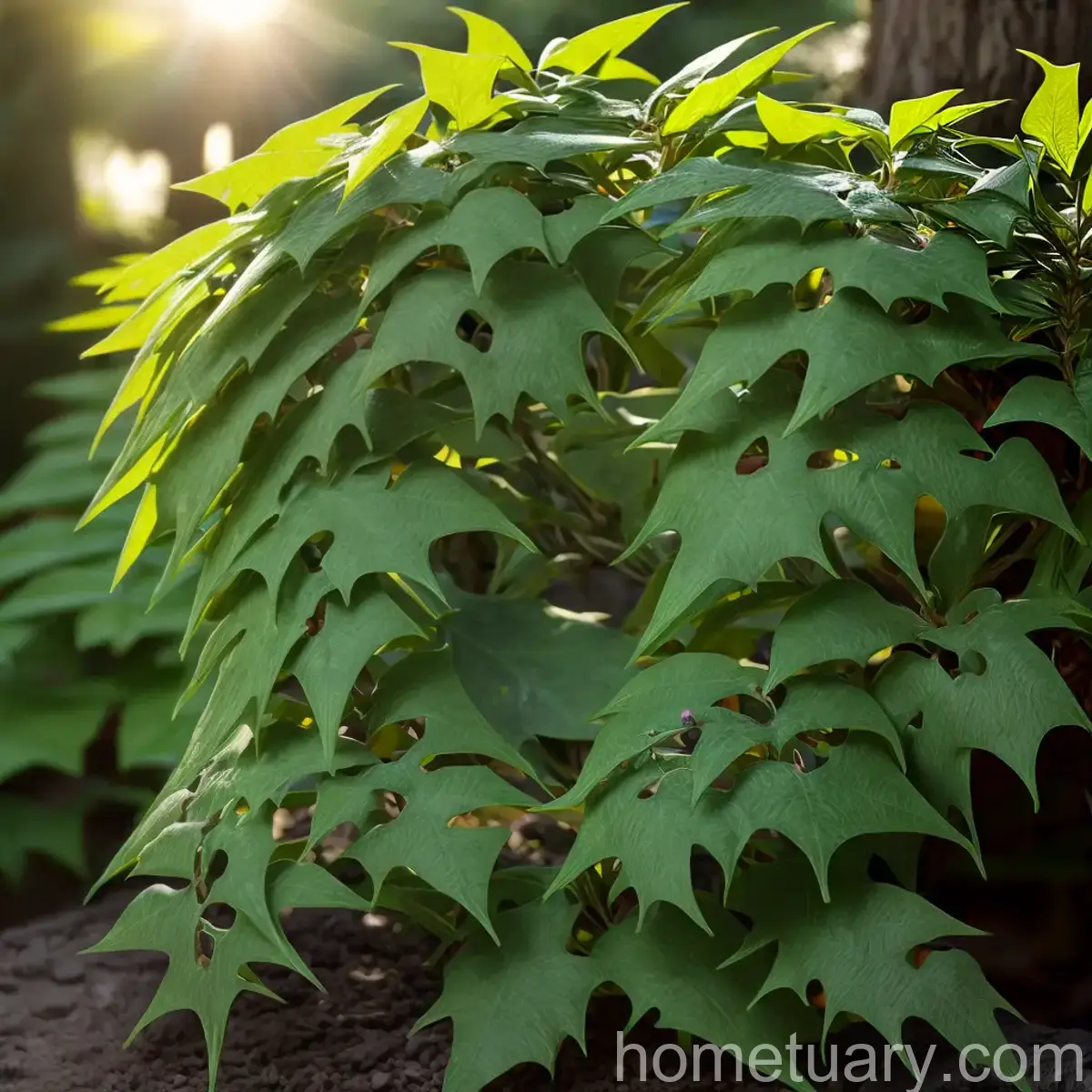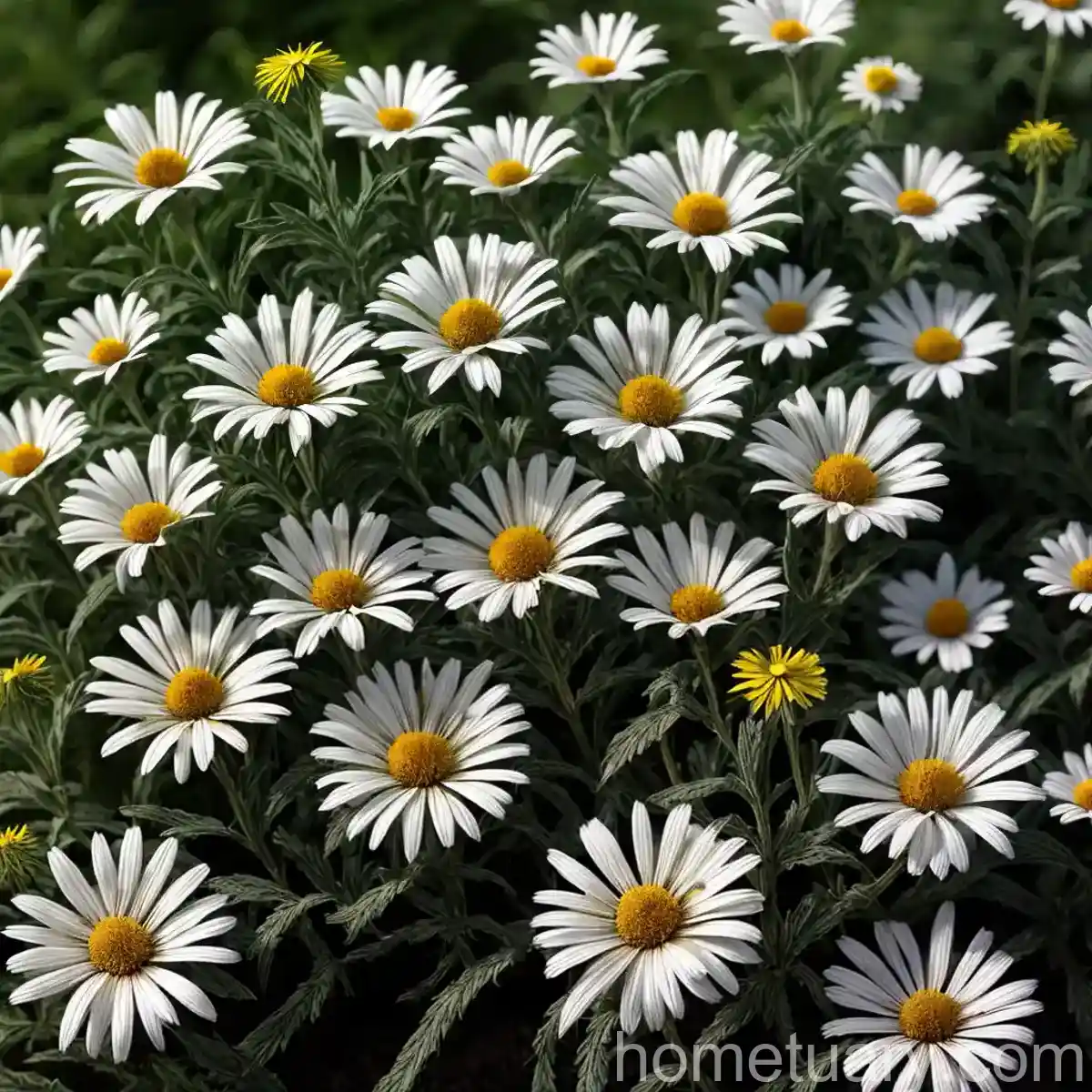Common Hop (Humulus lupulus ‘Chinook’): A Comprehensive Guide
The Humulus lupulus ‘Chinook’, also known as the common hop or Chinook hop plant, is a valued member of the Cannabaceae family. This perennial vine is admired for its role in brewing, herbal remedies, and ornamental purposes. In this in-depth guide, we will dive into the intricacies of the common hop plant, shedding light on its culture, uses, cultivation requirements, and much more.
What is the Common Hop (Humulus lupulus ‘Chinook’)?
Scientific Classification
– Family: Cannabaceae
– Genus: Humulus
– Species: Humulus lupulus ‘Chinook’
The common hop is a vigorous climbing plant with an extensive root system and twining stems that can reach impressive heights. This plant is dioecious, meaning individual plants are either male or female. The female hop cones, also known as strobiles, are the main attraction for brewers, as they impart bitterness, flavor, and aroma to beer.
The ‘Chinook’ variety of Humulus lupulus is sought after for its distinctive characteristics, contributing unique flavors and aromas to beer. This cultivar is particularly favored for its versatility and is widely used by both commercial brewers and homebrewing enthusiasts.
Key Takeaways – Common Hop (Humulus lupulus ‘Chinook’)
Before we delve into the specifics of the common hop plant, let’s outline the key takeaways that will be explored in detail throughout this guide:
- Culture
- Uses
- Water
- Sunlight
- Fertilizer
- Soil
- Pruning
- Propagation
- Container Popularity
- Common Diseases
- Common Pests
- Botanist’s Tips
- Fun Facts
- Links to External Resources
Throughout the following sections, we will address these aspects, providing comprehensive insights into the characteristics and requirements of the common hop plant.
Culture
Uses
The common hop, Humulus lupulus ‘Chinook’, boasts a rich history of various applications, making it a multifaceted plant with both commercial and traditional uses. Some of the primary uses and applications of the common hop plant include:
-
Brewing: This is perhaps the most renowned use of the common hop. The female hop cones are utilized in brewing to impart bitterness, aroma, and flavor to beer. The ‘Chinook’ variety, in particular, is highly esteemed for its unique flavor profile, making it a popular choice among craft and homebrewers.
-
Herbal Remedies: Historically, hops have been used in herbal medicine for their sedative and calming properties. They are often utilized in teas, tinctures, and infusions to support relaxation and sleep.
-
Ornamental Purposes: The vigorous growth and attractive foliage of the common hop make it a popular ornamental plant. It is often grown to provide shade, privacy screening, or to adorn trellises and arbors.
-
Traditional Medicinal Practices: In addition to its sedative properties, hops have also been used in traditional medicine to aid in digestion, alleviate anxiety, and promote relaxation.
The versatile nature of the common hop makes it a valuable addition to gardens, breweries, and traditional herbal medicine practices.
Water
Watering Requirements
-
Established Plants: Once the common hop plant is established, it generally requires regular watering. However, it is crucial to ensure that the soil has good drainage to prevent waterlogging, which can be detrimental to the plant’s health.
-
Young Plants: When the plant is in its initial stages of growth, it may require more frequent watering to aid in its establishment.
Sunlight
Sun Exposure
The common hop plant thrives in a sunny location, benefiting from full sun to partial shade. Adequate sunlight is essential for robust growth and the development of hop cones, especially for varieties like the ‘Chinook,’ which are cultivated for their specific flavor and aromatic properties.
Fertilizer
Nutrient Requirements
As a high-nutrient-demanding plant, the common hop benefits from a fertile growing medium. The soil should be enriched with organic matter and may require periodic fertilization to support vigorous growth and optimal cone development.
Soil
Preferred Soil Type
-
Well-Drained Soil: The common hop plant prefers a well-drained soil substrate to prevent waterlogging, which can lead to root rot and other detrimental conditions.
-
Neutral to Slightly Acidic pH: A pH range of 6.5 to 8.0 is generally suitable for the cultivation of the common hop plant.
Pruning
Pruning Practices
-
Pruning is essential to maintain the health and productivity of the common hop plant. It involves the removal of excess foliage, as well as the cutting back of old or diseased growth to encourage new shoot development and efficient cone production.
-
Spring Pruning: In early spring, the plant can be pruned to remove any dead or damaged growth from the previous season, promoting healthy regrowth.
Propagation
Methods of Propagation
The common hop plant can be propagated through various methods, including:
-
Division: Division of the rhizomes to produce new plants.
-
Cuttings: Utilizing stem cuttings from established plants to encourage root development.
-
Seeds: Propagation from seeds, although this method may result in genetic variability due to the dioecious nature of the plant.
Container Popularity
Container Cultivation
While the common hop plant is traditionally grown in open fields or garden settings, it can also be cultivated in containers. Container cultivation allows for greater control over the plant’s environment and is particularly advantageous for individuals with limited outdoor space.
Common Diseases
Disease Susceptibility
The common hop plant is susceptible to various diseases and pests, including:
-
Downy Mildew (Pseudoperonospora humuli): This fungal disease can cause devastating effects on hop yields if not managed effectively.
-
Powdery Mildew (Podosphaera spp.): Another common fungal infection that can impact plant health and cone quality.
Disease Diagnosis
Identifying and Managing Diseases
Early detection and proactive management of diseases are crucial for preserving the health and productivity of the common hop plant. Regular monitoring and the implementation of appropriate control measures, such as fungicidal treatments and cultural practices, are integral to disease management.
Common Pests
Pest Infestations
In addition to diseases, the common hop plant can also fall prey to various pests, including:
-
Aphids: These sap-sucking insects can cause damage to foliage and transmit viral diseases.
-
Spider Mites: Common pests that can affect the overall health and vigor of the plant.
Proactive pest monitoring and the implementation of integrated pest management strategies are essential for mitigating infestations and minimizing potential damage.
Botanist’s Tips
Cultivation Tips
-
Support Structures: Providing adequate support for the vigorous growth of the common hop plant is essential, especially when cultivating vertically to encourage optimal cone development.
-
Vigorous Growth: Regular monitoring and maintenance are necessary to manage the plant’s vigorous growth and prevent it from overpowering other garden elements.
Fun Facts
Did You Know?
-
The common hop, Humulus lupulus ‘Chinook’, is renowned for its role in the production of India Pale Ales (IPAs), where its distinctive flavor and aroma characteristics are highly prized by brewers and beer enthusiasts.
-
Hops are often referred to as the “spice of beer,” highlighting their crucial role in determining the flavor profile and bitterness of the final brew.
Now that we have explored the key aspects of the common hop plant, let’s delve into additional resources and external links for further exploration and reference.
Links to External Resources
For further information and in-depth exploration of the common hop plant, consider referring to the following external resources:
- Hop Growing Manual – University of Vermont Extension
- American Hop Museum – Educational Resources
- Brewers Association – Hop Resources
- Hop Growers of America – Cultivation Guides
- The Hop Page – Oregon State University
In conclusion, the common hop, Humulus lupulus ‘Chinook’, stands as a remarkable plant with diverse applications and a rich heritage in brewing, traditional medicine, and horticulture. Whether you’re a brewing enthusiast, a gardener seeking an ornamental climber, or an individual interested in herbal remedies, the common hop plant offers a wealth of opportunities for exploration and enjoyment.
With its distinct flavor profile, aromatic properties, and historical significance, the common hop continues to captivate enthusiasts and botanists alike, maintaining its status as a fascinating and esteemed member of the plant kingdom.
Meticulously balancing cultural nuances and scientific insights, the common hop, particularly the ‘Chinook’ variety, serves as a testament to the profound interplay between tradition, innovation, and the enduring allure of botanical wonders.
As we conclude our comprehensive exploration of the common hop, we invite you to further delve into its splendor and discover the myriad of possibilities it presents, whether in the realms of agriculture, horticulture, or the art of brewing.
Let the ancient echoes of hop cultivation and the modern marvels of its application guide you on an enriching journey through the realm of botanical marvels. Cheers to the common hop and its resounding legacy!
plaintext

